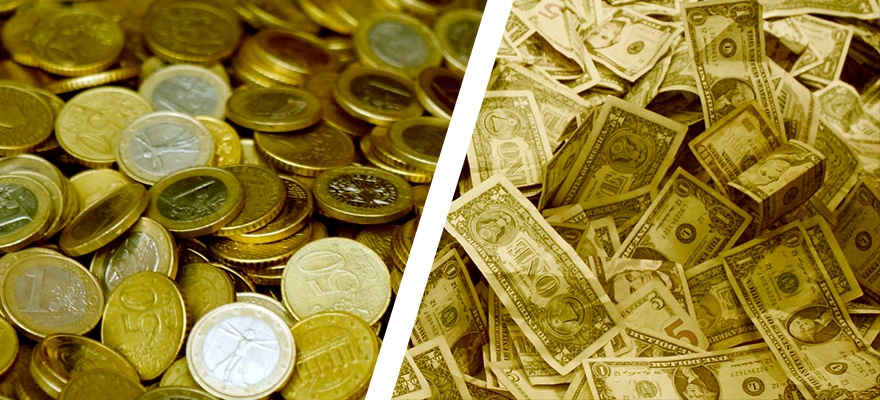One can almost hear the sound of the EUR/USD sliding. The peak of April 30th, 2014 at 1.3867 looks like an ancient landmark, before the great flood of Quantitative Easing (QE). Only one year later, within sight is the EUR/USD parity with the US dollar.
The last time the EUR/USD was at parity with the dollar was in October 2002. With the EU's Draghi spending nearly $67 billion per month on buying bonds, bond yields have fallen leaving the EUR/USD with no fundamental reasons to strengthen (see chart below).

The question now before us is: How can the Forex trader join the ride down to parity? Let’s explore several ways.
First, we can consider participating in the spot forex market. It is not too late to take a position trade and enter a sell on the EUR/USD. The question is timing. Perfection here is the enemy of the good. The rule of 3 is a reasonable approach. In other words, whatever amount one decides to put on a trade, divide that amount into three parts.
- One-third could be used to enter the market on a short.
- The second third can be triggered by a swing failure, where the EUR/USD retraces back, perhaps 100 pips and then starts resuming the ride down.
- A final third, just leave on the side for future entry.
While this is not a precise approach, it avoids an all-or-nothing approach. There is a lot of time to be right on the 900 pips distance to parity.
Another approach that adds some Risk Management to trading the slide in the EUR/USD is to place a weekly binary option on the EUR/USD. This can be done at any binary option platform that offers longer-term durations. For example, the NoaFX binary platform offers 5 day durations, which is essentially an end-of-week play on an underlying market.
In the image below, we see a real “Down” binary trade with 4 days 23 Hours and 59 seconds, which I had put on. Putting on every Monday morning such a trade will provide the opportunity to ride the EUR/USD down to parity, with limited risk.

Let’s briefly review some further facts about binaries. The Weekly binaries are fixed payouts and the trader gets a fixed return. In the above example, the return is $17.50 on a risk of $25, or 70%. If the price of the underlying market settles as a winner, the risk is the amount paid. The binaries that provide an opportunity to bet whether the underlying market will be higher or lower are, in effect, At-the-Money (ATM) binary trades.
An advantage of this approach is that there is a known and maximum risk and it allows a trader to not miss a downside move by simply putting on a trade on a Monday morning and letting it work. Of course, one can always get out of the way if a bullish move occurs. The bottom-line is that there is a unique opportunity of using binaries and playing the EUR/USD to parity. Don’t miss out on it!

















